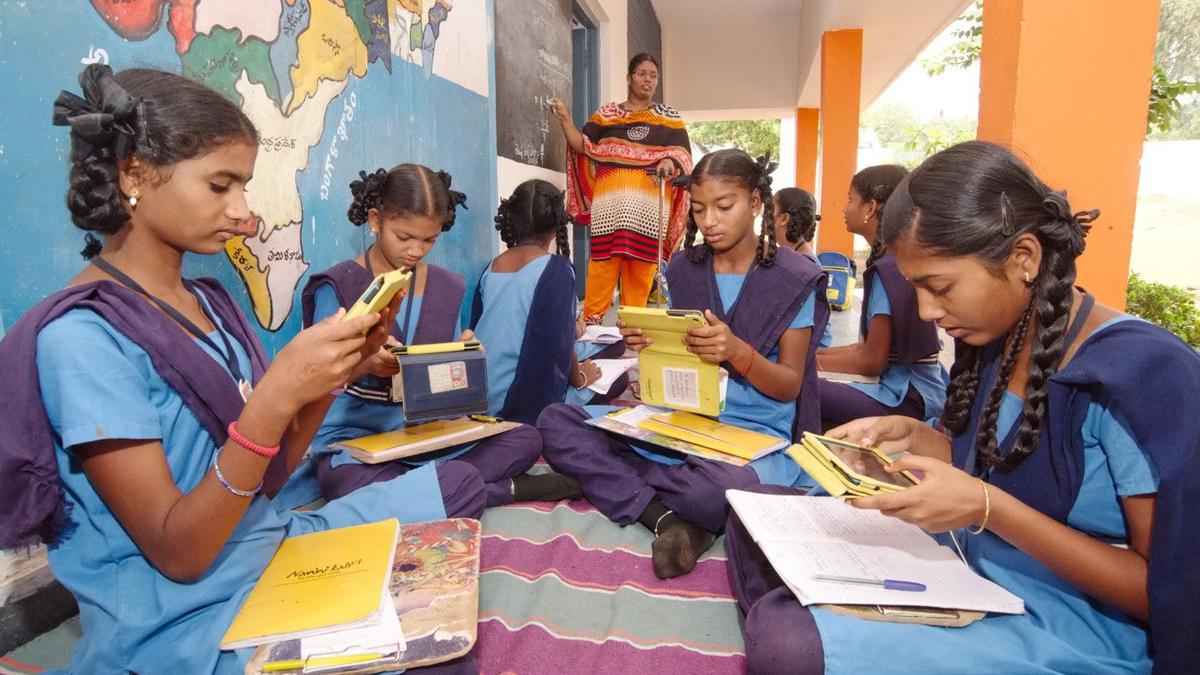In a country where the phrase “Beti padhegi toh kya karegi? (What will a daughter do if she studies?)” once echoed through homes and villages, India has undergone a powerful transformation in girls’ education over the past decade.
At a Mahila Sammelan (Women’s Conference) in Dwarka, Gujarat, Prime Minister Narendra Modi asked a group of women how many had studied beyond class 5. To his surprise, most of the elderly women raised their hands, while few younger women did. When asked why, they pointed to the era of the Gaekwad dynasty (1721-1947), when fathers were penalised for not educating their daughters. Today, however, many women are literate, while their daughters-in-law are not.
This anecdote underscores a larger truth: good intentions must be backed by accountability, leadership, and policy. And under Mr. Modi’s leadership, India is witnessing just that — a systemic push to change not just rules, but mindsets. This transformation is not just about more girls in classrooms; it’s about shifting the very foundations of Indian society, its health, economy, and demography, by empowering its daughters with the most effective tool of change: education.
The Gujarat model
As Chief Minister of Gujarat, Mr. Modi recognised that tackling issues such as female foeticide and girls’ illiteracy required a multi-pronged approach. Laws alone wouldn’t suffice; a fundamental shift in public perception, supported by infrastructure and incentives, was required. Launched in 2003, the Kanya Kelavani campaign became a key vehicle for this change. The initiative promoted awareness about girls’ education while addressing barriers such as the lack of separate toilets for girls in schools, a major cause of dropouts during adolescence.
The results were significant. Female literacy rate in Gujarat which was lower than the national average, increased to 70%, higher than the national average of 64%. The school dropout rate reduced by as much as 90% among female students in targeted districts.
Mr. Modi transformed the policy initiative through widespread public support, by personally auctioning gifts received at public events, raising ₹19 crore for girls’ education. He also made a personal contribution of ₹21 lakh. These efforts sent a strong signal: girls’ education wasn’t just a government scheme, it was a public movement.
Scaling success nationwide
Inspired by Gujarat’s success, the Beti Bachao, Beti Padhao (BBBP) initiative was launched nationwide in 2015. Its aim was twofold: to prevent female foeticide and promote girls’ education. The initiative focused on 100 gender-critical districts in its initial phase and later expanded nationwide. It brought together multiple ministries — Women and Child Development, Health and Family Welfare, and Human Resource Development — in a coordinated push for change. Among other measures of outcome, its impact is most visible in the survival rate of girls. India’s sex ratio at birth improved from 919 girls per 1,000 boys (2015-16) to 929 (2019-21). Encouragingly, 20 out of 30 States/UTs are performing better than the national average of 930.
But these improvements in sex ratio at birth are encouraging, they are just one piece of a much larger puzzle. The real power of girls’ education lies in the ripple effects it triggers across society. Educated women tend to marry later and have fewer children. India’s Total Fertility Rate has dropped to 2.0, just below replacement level. This shift is closely tied to rising female education and workforce participation. Women with secondary education are more likely to seek institutional deliveries and prenatal care. The Infant Mortality Rate for girls has dropped from 49 per 1,000 live births in 2014 to 33 by 2020. While overall female labour force participation remains a challenge, it is rising in sectors such as healthcare, education, STEM, and entrepreneurship — fields that thrive on literacy and skills. From officers in the armed forces to CEOs of tech startups, today’s educated Indian women are breaking barriers.
The multiplier effect
Educated girls grow into educated mothers — and that changes everything. Studies show that children of educated mothers perform better in school and experience better health outcomes. In Madhya Pradesh, recent surveys show that 89.5% of people are aware of BBBP, and 63.2% say it directly encouraged them to send their daughters to school. Communities reported increased support for delaying early marriage and promoting girls’ higher education. These statistics reflect changing mindsets in regions where girls were once kept from schools entirely.
This transformation is a deep-rooted change facilitated by thoughtful and effective policies aimed at empowering young women. The long-term impact of these initiatives will be even more pronounced because of the positive feedback cycle that enhances not only individual lives but entire communities. Today’s educated girls are not merely students; they are potential leaders, advocates, and change-makers of tomorrow. Educated girls are more likely to join the workforce, contribute to their families’ incomes, and invest in the education of their children.
As we look to the future, we can be hopeful that the changes initiated under Mr. Modi’s leadership will continue to gain momentum, leading to a more equitable society where every girl has the right to learn, grow, and thrive. Let’s be clear: when you educate a girl, you save a society.
Shamika Ravi, Member of the Economic Advisory Council to the Prime Minister, and Secretary to Government of India. Views are personal
Published – October 01, 2025 01:20 am IST
